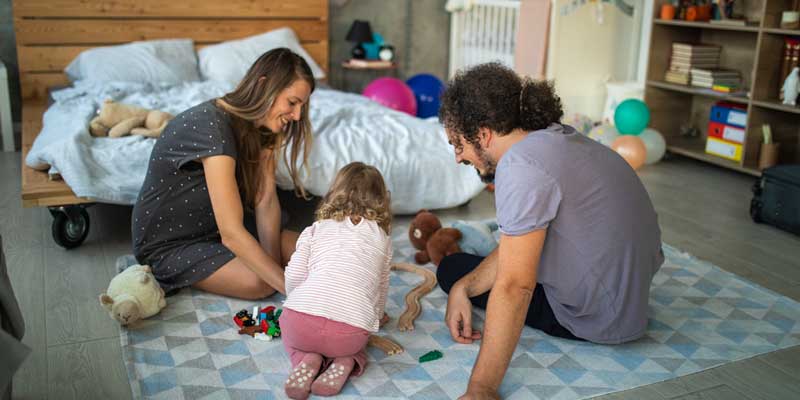New experiences make life fun, and they help you discover more about yourself. Many activities kids try don’t stick with them for life. And that’s ok. But with our helpful guide, you can keep your kids interested in new activities for much longer.
Capturing your child’s full attention can often be hard. Getting them interested in new things can seem even harder.
Trying something new takes courage. Each time your child steps outside their comfort zone they are learning how to be their own champion.
We’ve put together the best tips for introducing new activities to your kids. This blog will go over everything from presentation to display and safety. Read below to learn the most effective ways to keep your kids interested in a new activity.
Introducing the Activity
As parents, we know that children can latch on to a particular activity and not want to do anything else. It often takes a lot of encouragement to get your kids to begin something new. A good place to start is with a positive impression of the activity.
Kids are all about first impressions. They make a large impact on how a child is willing to proceed. Children are looking for fun, new, and interesting experiences to build on but they also need to feel secure.
How you introduce an activity to them is crucial. The setup will determine their interest. This means a poor setup can turn them off from an activity.

Setting Up the Activity
When you are setting up the activity, make sure it looks fun rather than overwhelming. Children will always gravitate toward things that look engaging.
Presentation
Whatever the activity is, it needs to look exciting to your child. You can add color to almost any activity to create more intrigue.
If you know your child needs more stimulation to engage, try for bright colors or busy displays. If your child needs less stimulation to concentrate, use simple displays with few colors.
You can also include items you know your child likes such as a ball or stuffed animal. The familiar item will help capture your child’s attention and increase their comfort level.
Did your family create New Year’s resolutions that build success? Consider your child’s goals during your presentation of the new activity. Perhaps their goals are learning to crawl, singing the ABC’s, hitting a homerun, getting a better grade, or wanting more independence.
Regardless of what they hope to achieve, align your presentation of the new activity with their aspirations.
Your child will also be watching you when you’re presenting this activity to them. So, make sure you have a happy outlook about the task. Don’t get stuck in the negative thinking trap. A positive attitude is powerful.

Teaching the Activity
Even as adults, when we learn something new, we tend to understand things better when taught at a slower pace. For children, this concept is even more accurate.
Break the new activity into parts so that it’s easier for them to handle. You don’t want to overwhelm your child with too much at one time. Feeling overwhelmed can lead to frustration and defeat.
Learning one part at a time will also help children with short attention spans. It will keep them engaged and focused on the goal.
To start a new activity, you will have to show your child how to complete each part. Do it slowly at first, so they can follow your steps without getting discouraged. Begin to move at the pace they seem most comfortable with once you start seeing progress.
After a child masters one step, you can move onto the next one. Keep expanding on the activity or skill for a greater sense of accomplishment.

Repetition
Practice makes perfect, right? It’s likely that your child isn’t going to master an activity right off the bat. Repetition will allow them to make mistakes and ask questions.
Repetition and routines offer children, and adults, a sense of security. Routines can influence a child’s development. They also strengthen family bonds and help improve behavior.
Introducing new activities to your child regularly can be a part of your family routine. Developing a consistent routine is crucial to building good habits.
A Child’s Perspective
While you may have bounced a ball too many times to count, your child has not. It is a brand-new experience full of mystery!
Perspective is everything. It is important to frame the new activity from the child’s point of view for their comfort.
Communicate with your child in their language, not yours. This means you should use language they know and are comfortable with. Explain things in a way that will click for them.

Provide Comfortable Surroundings
Your child should be comfortable in their surroundings when introducing the activity. This could mean setting it up on the floor, at a toddler table, or in an area of the yard.
If the activity is a hassle to access, your child is less likely to want to take part.
Preparation is Key
Make sure your child has what they need for the activity before they begin. While playing, they should have everything related to the activity within reach.
If your child must stop in the middle of playing to ask for help, it is more likely they will not return to the activity. It’s best not to break their concentration once they start.

Tips While Doing the Activity
As your child is making their way through a new activity, there are some helpful guidelines to follow. Read below for more tips to keep your kids engaged.
Pacing and Interest
The speed at which you complete an activity is not going to be the same as your child. Allow them to dictate the pace. Doing this will allow you to see where they excel and where they need help.
Note your child’s level of interest in new activities. This will help you find more experiences they will enjoy.
No Rushing
Don’t push your child to master the activity at a certain pace. Every child has a different way of learning and they may need an extended period to work at it.
As parents, we always want our kids to succeed at everything they do. But try to not get frustrated if there is a lack of progress. It will only discourage your child from wanting to try more new things.
Adapt
Make notes while your child is completing the activity. Write down what they seem to be doing well and what they are struggling with.
List and save any tasks that seem too difficult and frustrating. Organizing them will help you remember to bring them back into the mix when appropriate.
In the meantime, adapt activities and tasks to meet your child’s capabilities. When they grasp the new adaption, then you can add the challenging activity back in.
Keep an eye on what they respond to and their engagement level. If your child becomes frustrated with their new activity, they won’t want to try anything new.

Allow Creativity
Watch your child interact with their new activity. Allow them to go a little off-script and explore.
Allowing for creativity will boost your child’s interest. It also makes kids smarter by encouraging free-thinking and problem-solving skills.
Safety
As with any activity, safety and appropriateness should be priorities.
Always supervise new activities to gauge comfort and ability. Knowing how a child reacts will helps you decide how to proceed.
Experiencing new things is crucial for our kids. It gets them out of their comfort zone and into something new and challenging. But introducing your child to a new activity can be a challenging experience itself.
Being thoughtful about your plan will make the task easier for you and much more fun for your child.

Looking for things to do with toddlers? Choose an activity that will give them life-saving skills. Participating in swimming lessons, summer swim camp, and family swims are great ways to learn about water safety.
It’s also an excellent way to get your children in an active and healthy routine.
Njswim offers year-round swim lessons for all ages at our six premier locations. Contact us today for more information on our swimming classes and other services!




